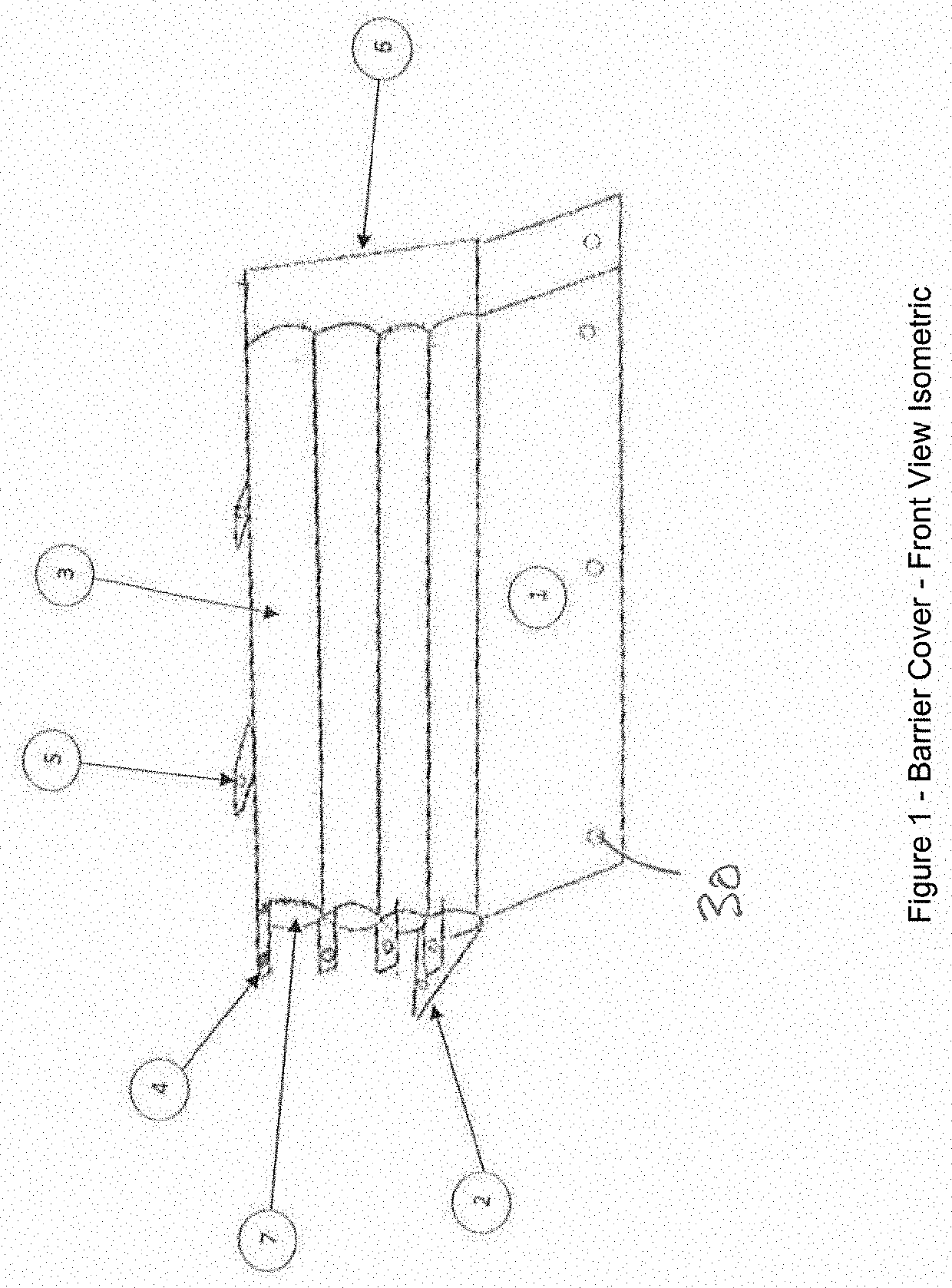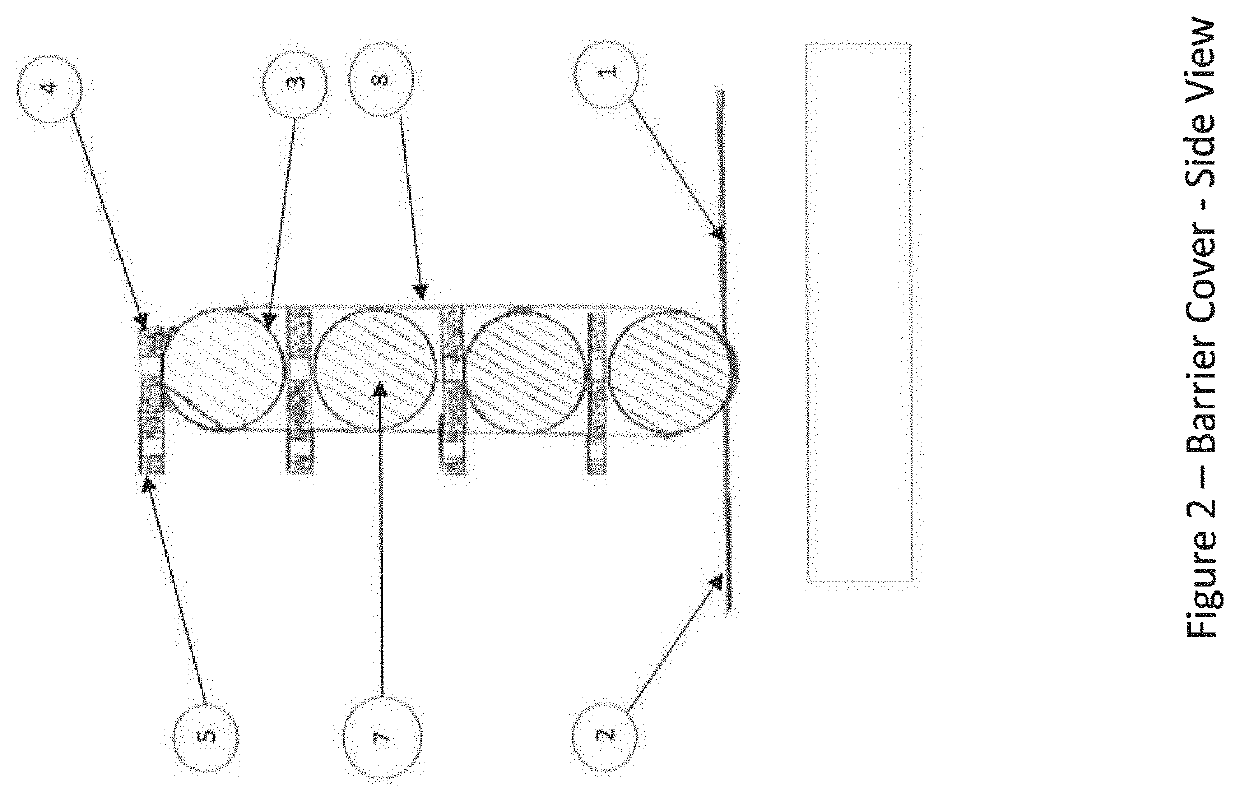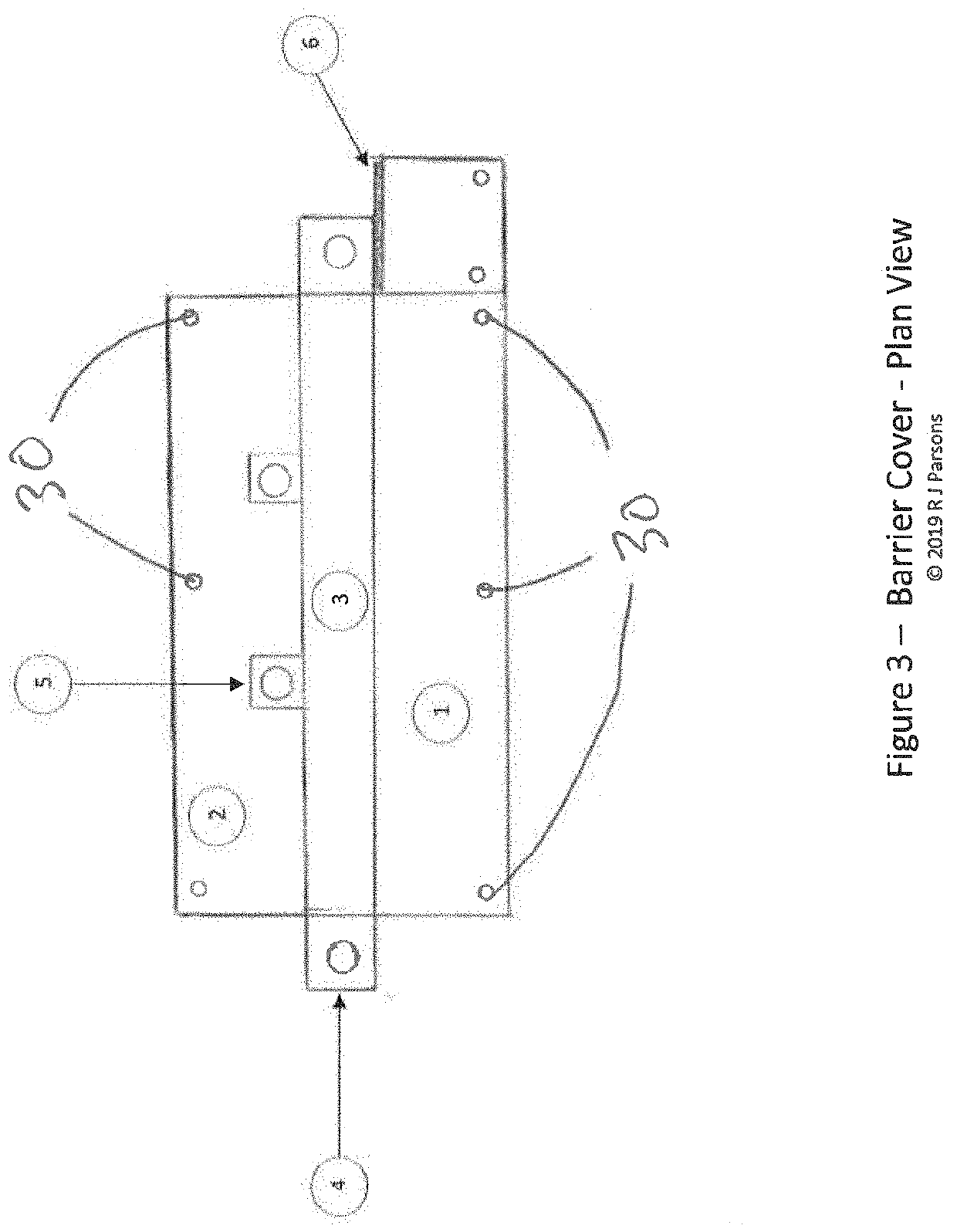Rapidly deployable flood defence system
a flood defence and rapid deployment technology, applied in the field of rapid deployment of flood barriers or diking systems, can solve the problems of requiring thousands of person hours to deploy and stack sandbags, burlap sandbags need to be removed or tend to rot or split, and achieve the effect of rapid and easy deploymen
- Summary
- Abstract
- Description
- Claims
- Application Information
AI Technical Summary
Benefits of technology
Problems solved by technology
Method used
Image
Examples
Embodiment Construction
[0028]The rapidly deployable flood-defense system 11 comprises a barrier cover 8, as shown in FIGS. 1-4. The barrier cover 8 comprises a front apron 1, a rear apron 2, and a plurality of crossbeam housing tubes 3 for containment of the air inflatable crossbeams 7. The crossbeam housing tubes 3 are laterally-extending and stacked in a vertical direction.
[0029]As can be seen in the Figures, each crossbeam housing tube 3 includes an end retaining tab 4 at each end, and a plurality of rear support retaining tabs 5 which are spaced along the lateral length of each crossbeam housing tube 3. As can be seen especially in FIGS. 2 and 4, the rear support retaining tabs 5 of each crossbeam housing tube 3, are spaced apart identically to the rear support retaining tabs of the crossbeam housing above and below. This way, all of the rear support retaining tabs 5 line up in a generally vertical direction.
[0030]The barrier cover 8 is a textile component that is used to provide the overall structure...
PUM
 Login to View More
Login to View More Abstract
Description
Claims
Application Information
 Login to View More
Login to View More - R&D
- Intellectual Property
- Life Sciences
- Materials
- Tech Scout
- Unparalleled Data Quality
- Higher Quality Content
- 60% Fewer Hallucinations
Browse by: Latest US Patents, China's latest patents, Technical Efficacy Thesaurus, Application Domain, Technology Topic, Popular Technical Reports.
© 2025 PatSnap. All rights reserved.Legal|Privacy policy|Modern Slavery Act Transparency Statement|Sitemap|About US| Contact US: help@patsnap.com



